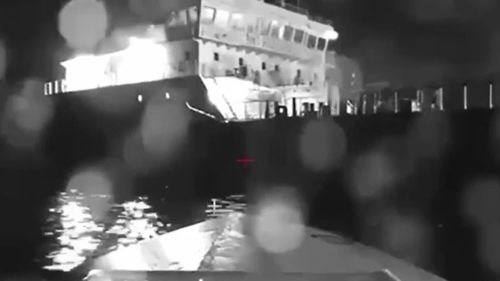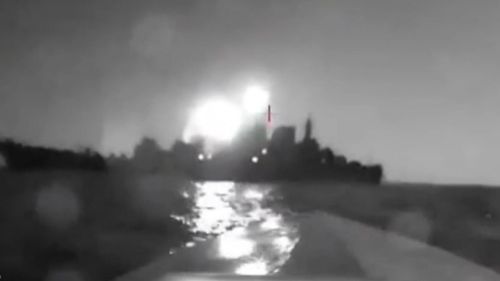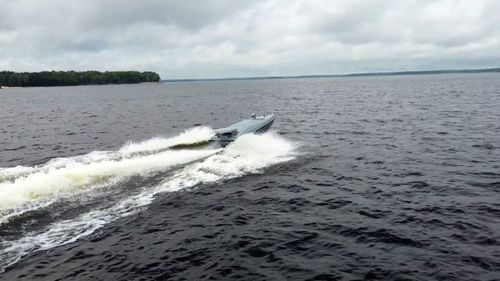Ukrainian sea drones What are they and how do they impact the war?
An attack by Ukrainian naval drones on Russian ships in the Black Sea late last week was the latest incident involving military unmanned technology in the conflict.
Both sides have widely deployed aerial drones since the start of the war last February, but this new maritime technology has been steadily gathering pace.
Defence analyst Marcus Hellyer, of the Australian Strategic Policy Institute, spoke with 9news.com.au about how sea drones are affecting the Ukraine conflict.

What are naval drones?
The vessels come in many shapes and sizes, but the Ukrainian drones are quite small, comparable in size to a small boat or jet ski.
They operate on or below the water’s surface, but even when not submerged have a low profile that makes them hard to detect.
They can be deployed on a variety of missions, such as mine clearance, surveillance duties or detonating near targets like enemy ships.
Costing about $US250,000 ($390,000), they are cheaper than many long-range missiles.
“They’re a perfect weapon for the underdog,” Hellyer said.
“They’re relatively simple to manufacture because they can be built from off-the-shelf components used in widely available commercial drones.”

How do sea drones work?
The technology can be completely autonomous or controlled by a human operator.
They can be deployed speedily and without the need for a fully trained crew.
The Ukrainian sea drones are typically pre-programmed with long-range targets and launched before they are guided in by a human.
The technology then becomes a “kamikaze'” weapon, as its payload of explosives detonates close to the target.
“Fully autonomous systems are harder for an enemy to detect, but it means less human control and the risk (of hitting) the wrong target, such as a neutral ship,” Hellyer said.
“There appears to be a high degree of humans in the loop when it comes to the Ukrainian control system.”

Why is Ukraine using them?
Much of the small Ukrainian navy was destroyed by Russia’s far bigger navy early in the war.
Sea drones offer a cheap alternative to conventional warships that can take months or years to build and cost millions of dollars.
Since last year, combat missions by Ukrainian sea drones have increased in range.
Last Friday, they attacked a major naval base in Russia, leaving a damaged Russian warship listing in the Black Sea, in a brazen strike carried out hundreds of kilometres from Ukrainian-held territory.
Social media videos showed the vessel, an amphibious Russian landing ship, tilting badly and sitting very low in the water as it was being towed near the base at Novorossiysk, Russia’s largest port.
The drones also damaged a civilian Russian tanker, Ukrainian officials claimed.
A Ukraine Security Service source told CNN the hit on the Russian oil tanker, the SIG, was carried out in a joint operation with the Navy and that it involved a sea drone with 450kg of TNT.
Ukrainian military sources have told CNN that sea drones were also used in an attack on the Kerch Bridge last month.
Hellyer said Ukraine’s use of naval drones has helped blunt the threat of Russia’s Black Sea fleet.
“The attacks seem to be getting further and further. They started close the Ukrainian side of the Black Sea but have now seem to have extended hundreds of kilometres in range.”








